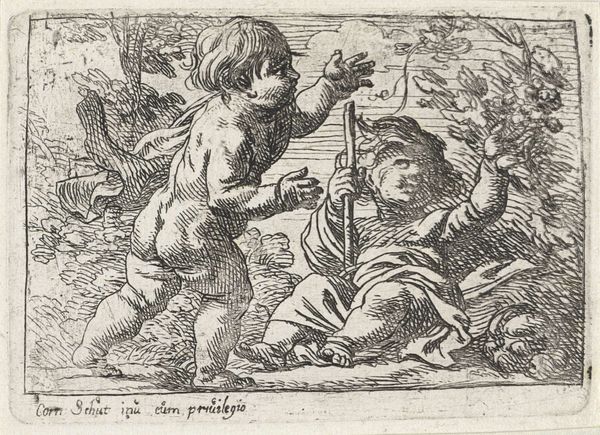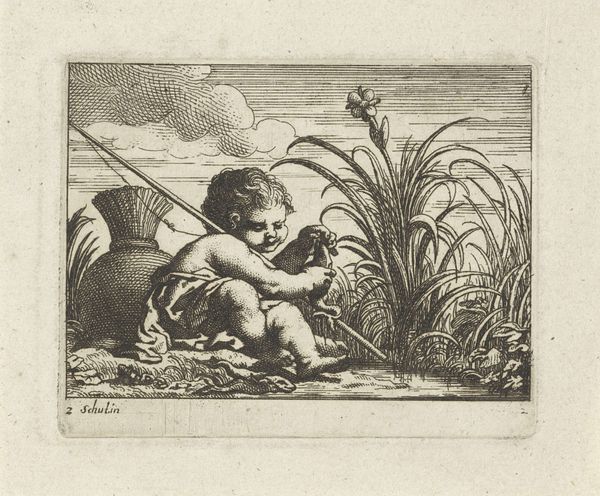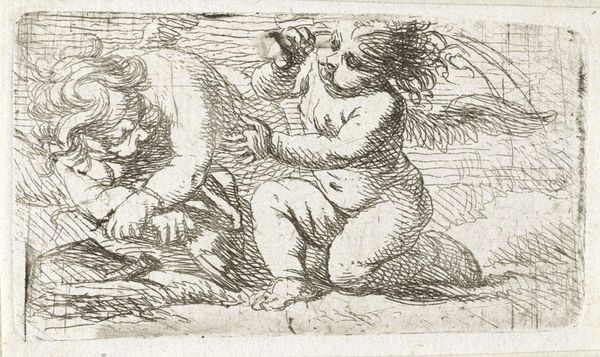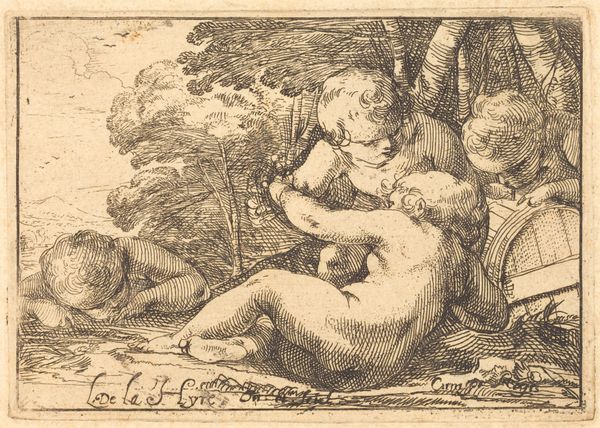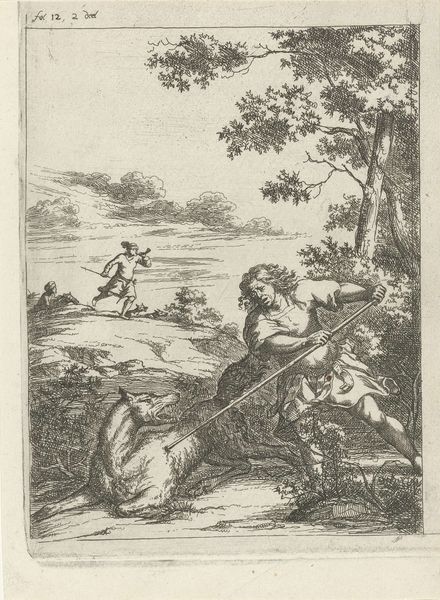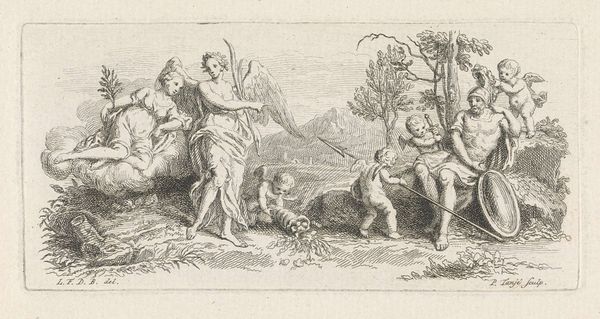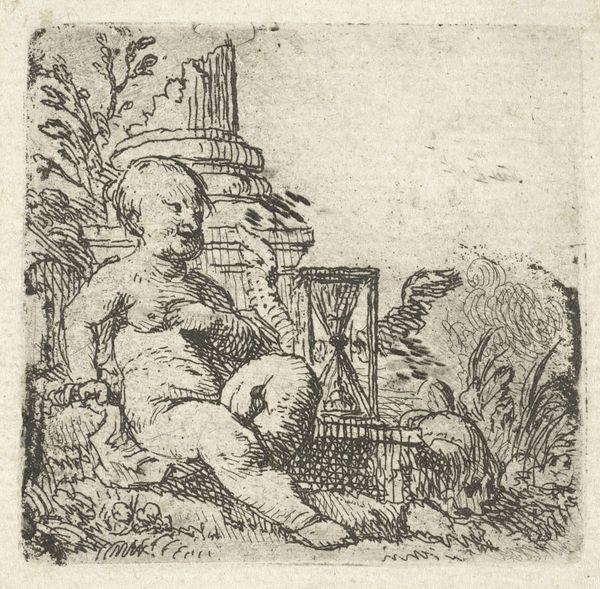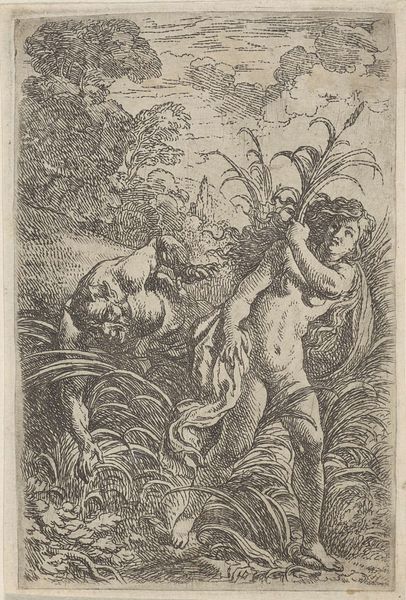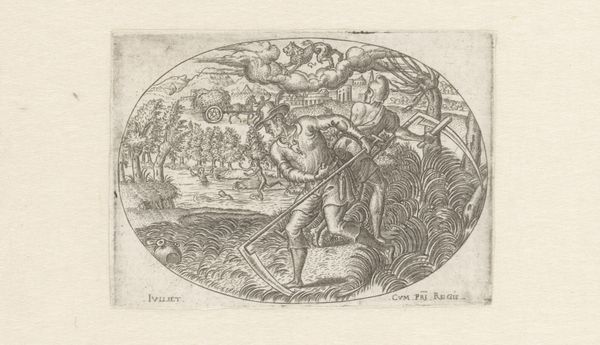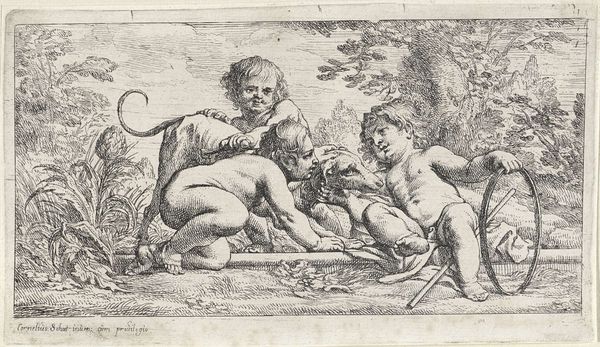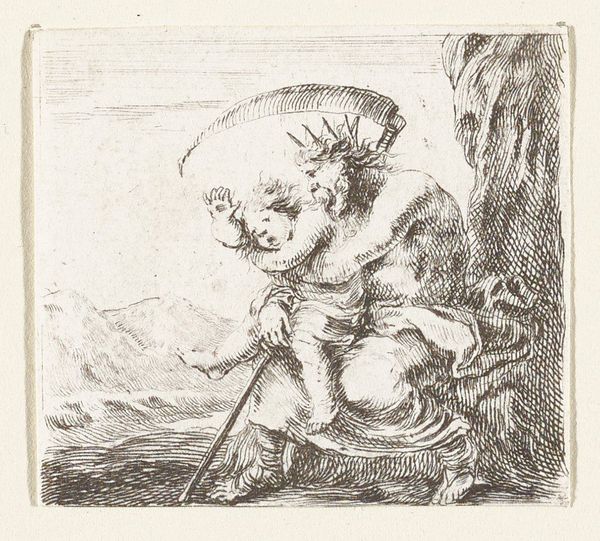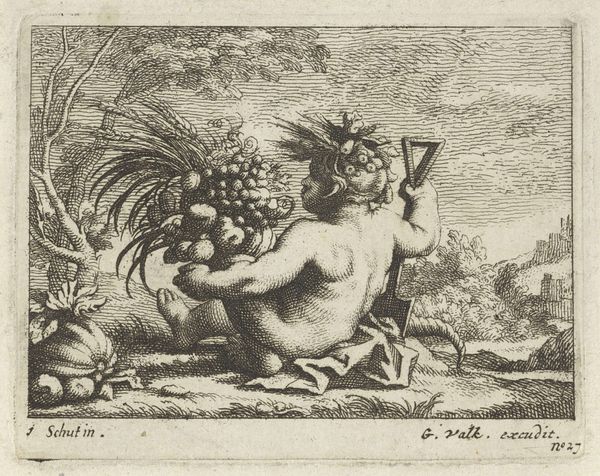
drawing, ink, pen
#
drawing
#
baroque
#
ink
#
pen
#
genre-painting
Dimensions: height 68 mm, width 94 mm
Copyright: Rijks Museum: Open Domain
Editor: Here we have Cornelis Schut's "Water," created sometime between 1618 and 1655. It's an ink drawing done with a pen and it definitely has this dreamy, baroque feel to it. I’m struck by the detailed lines and the way they create texture. What stands out to you in terms of the formal elements? Curator: The dynamism of the composition is rather noteworthy. Consider the diagonals—the fishing rod, the angles of the reeds. They create a sense of movement and tension that's captivating. Also, the contrasting textures—the soft, fleshy rendering of the child's figure against the sharp, wiry quality of the vegetation—generate a visual interest. How does the handling of line contribute to your perception of the scene? Editor: It gives the entire work a delicate, almost fragile feel, especially with the subject matter including this plump child. Everything appears meticulously etched, like the artist didn’t want to miss anything. Are there compositional decisions that contribute to the focus on the child? Curator: Indeed. The placement of the child directly in the center of the picture plane establishes him as the focal point. Furthermore, the arrangement of the other elements—the reeds, the vase, the clouds—act as a sort of frame, guiding the viewer's eye back to the central figure. Note also the use of hatching to build up volume and create subtle gradations of light and shadow. The strategic use of darkness enhances the form and weight of the figure. Editor: That’s helpful to think about the composition choices so intentionally. So even in a genre scene drawing like this, the interplay between lines, shapes, and textures is not just representational but contributes to the meaning and emotional impact. Curator: Precisely. By analyzing the intrinsic formal qualities, we may appreciate the drawing not only as a representation, but as a meticulously constructed visual object which communicates its ideas through form itself.
Comments
No comments
Be the first to comment and join the conversation on the ultimate creative platform.
